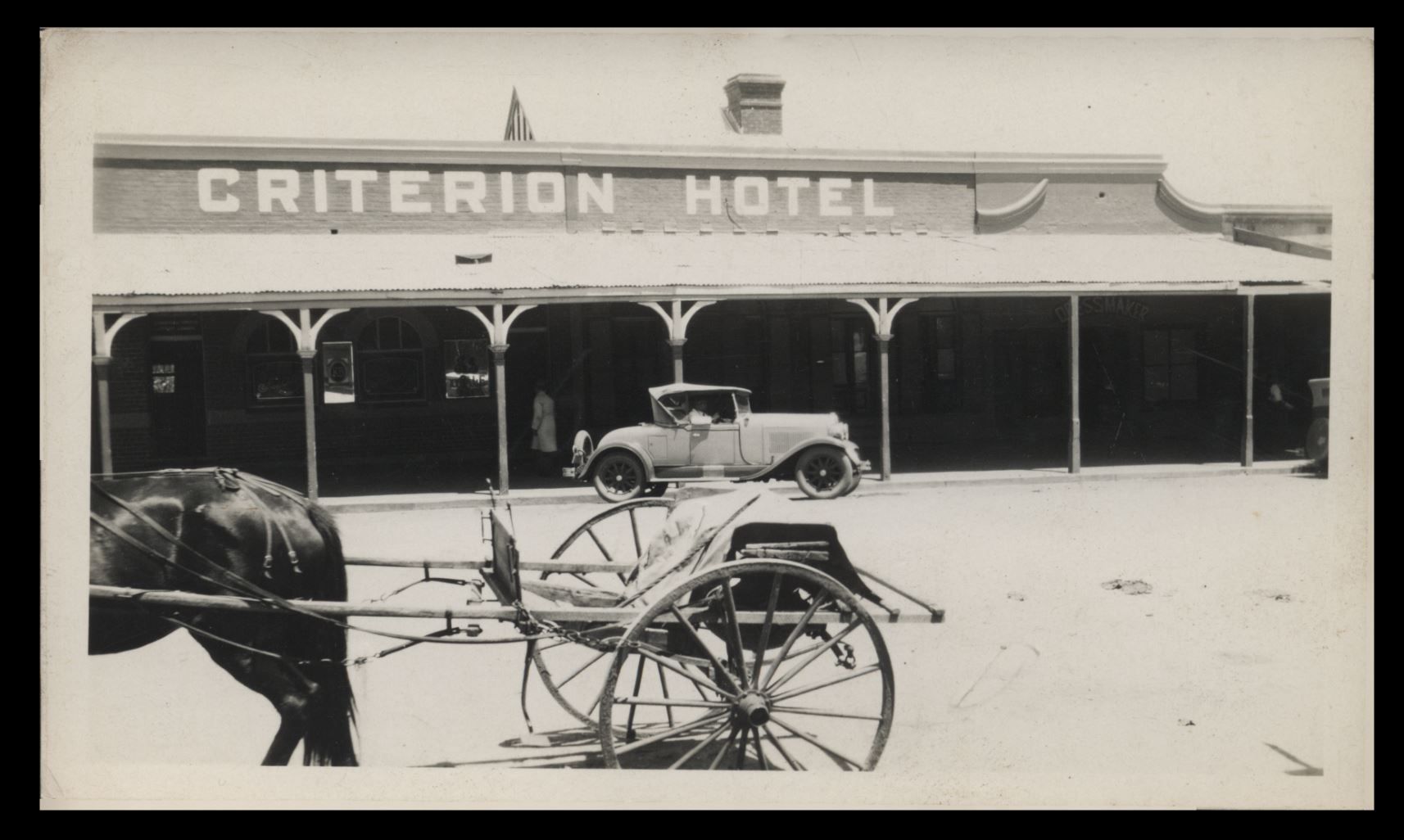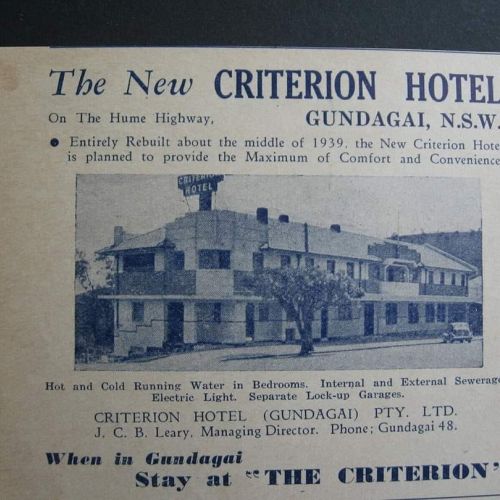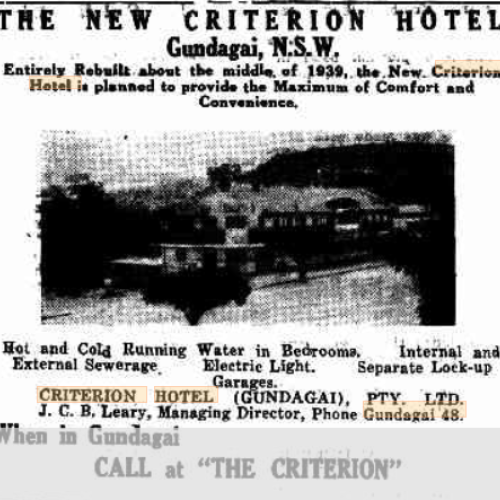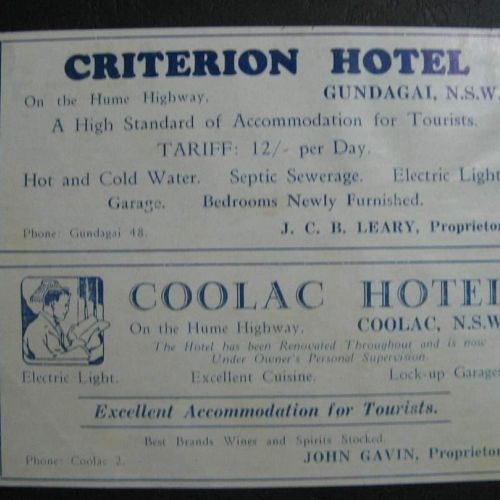The History of the Criterion Hotel Gundagai
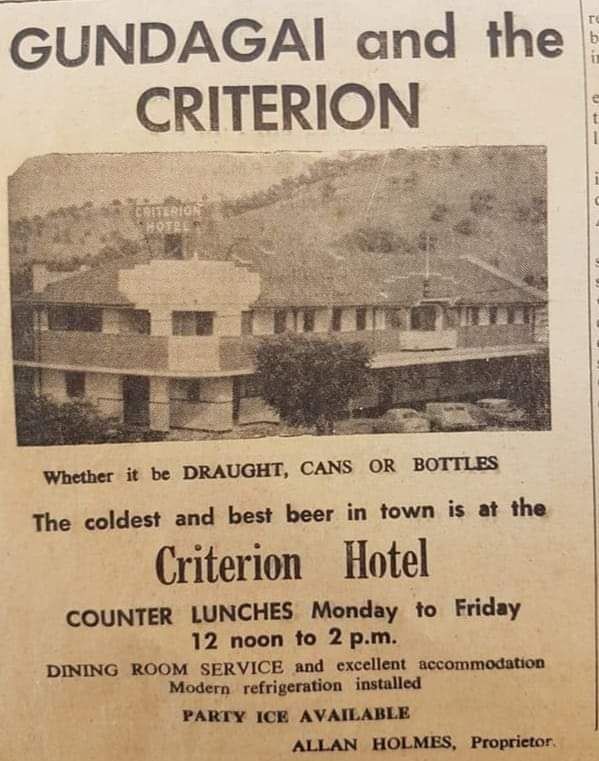
The history of the Criterion Hotel dates to 1847 when Robert Riley and John Massey built the 4th hotel in the original township. Back then, this was called the Blacksmith Arms Hotel. Massey held the license for this (NO 676) and its was dated 1st January 1848.
Robert Riley bought out Massey and changed the name to Milton’s Head Hotel. The 1852 flood took a toll on the township of Gundagai and the hotel itself, washing away the venue as well as all its stock. Even back then, the courage and refusal to be defeated was strong. Riley retrieved a few barrels of beer and set up business on higher ground in Sheridan Street.
After the aftermath of the floods, Robert Riley rebuilt the venue and changed its name to Riley’s Hotel.
In 1871 Jeremiah Leary was named licensee of Riley’s Hotel. Leary permanently settled in Gundagai in 1856, taking up hotel-keeping. He operated the bridge hotel in South Gundagai while at the same time running ‘Big Ben’ a Gundagai Property. Riley’s’ Hotel was later known as the Criterion Hotel and was owned by the Leary family for many years.
The Criterion Hotel was re-built in 1939 and part of the land on which the new building stood had been William Carr’s Saddlery shop (this is the present dining room). Messrs Murphy and Schnorkel afterwards followed in the same trade, then Charles Mudear. Finally, Percy Jenkins’ Billard saloon was erected.
The Flood – 1852
The Great flood of 1852 saw a lot of devastation for the old township of Gundagai. Robert Riley operated Milton Head Hotel before the flood left him destitute, with no stock left. Robert managed to located barrels of beer that had been washed miles downstream and set up shop on higher ground of Sheridan Street. After the flood, Robert Riley re-built the hotel, later changing the name to Riley’s Hotel.
In 1851 the township experienced an extreme drought which plague the area and in June 1852, after weeks of torrential rain, the Murrumbidgee River at Gundagai broke it’s banks.
Other floods saw residents take refuge in their attics or rooftops, however, this time, the water rose so rapidly there was no escape for some.
The town of Gundagai was destroyed, midnight on the 25th June 1852. Over the two days, over 80 people drowned with a township of 250 people (the final death count can never been known) due to travellers in the area. This flood still remains one of Australia’s deadliest Natural Disasters.
On Friday morning, about, 9 o’clock … A boat came from the other side of the river to relieve Mr. Thatcher, whose family had taken to the loft. In re-crossing the river the boat was swamped, and five children were drowned. From the fearful current, and the enormous logs that it was carrying down, it was impossible to attempt to take any more that day. As night drew in, the unavailing cries for assistance all around became fearfully harassing. Crash after crash announced the fall of some house, and the screams that followed the engulphing (sic) of those who clung till the water attained its greatest height, about 11 o’clock at night. Up to this time, about 34 houses had been washed away, and 60 lives lost. (Australian National Maritime Museum).
The townspeople were lucky. Two Wiradjuri men, Yarri and ‘Jacky Jacky’ who lived in the area helped with the rescue operation and saved over 60 people. The death toll could have been a lot higher if not for the heroic efforts of local Wiradjuri men. On the year of the 165 anniversaries of the great Gundagai floods, a sculpture was unveiled on Sheridan Street. This is a powerful piece of artwork, showing Yarri, Jacky and their canoe. This is a wonderful testament to two brave and skilful men who can tell the story of the Great flood of 1852.
Once the water receded there were only three houses left standing. The clean-up took along time and in 1853, just after this was completed, another flood hit. After this, the township built on higher ground.
Event to this day, floods still occur at Gundagai.
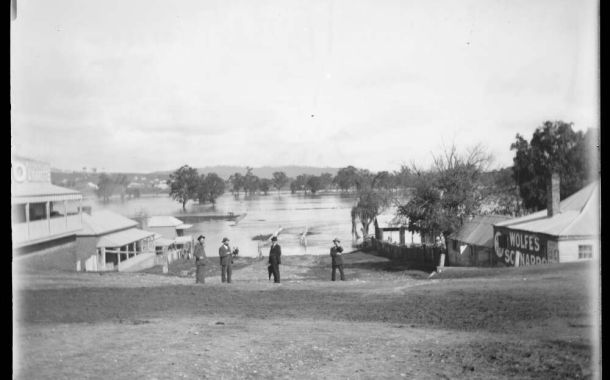
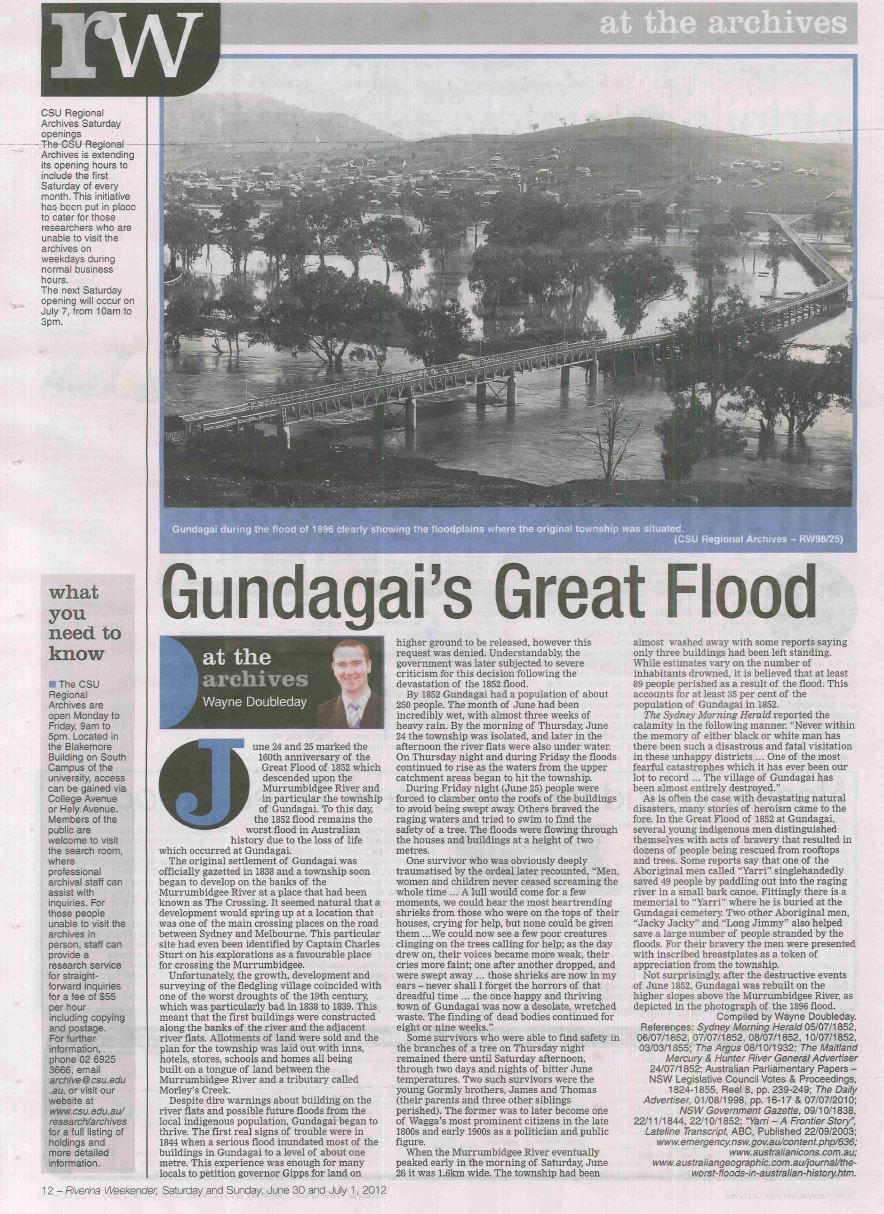
Pub Murals by Arnold St Clair

Even when you venture into the Art Deco era Criterion Hotel in the main street, the story of the 1852 flood is impossible to ignore. It’s been immortalised in fantastic murals done by artist Arnold “Don” St Claire in the 1960s. The paintings reference the biblical flood story and works by Michaelangelo, and capture starkly the terror of the event. There’s also a board listing the names and ages of everyone known to have drowned in the disaster.
St Clair was a gifted artist who was a finalist in the 1965 Sulman Prize and in the 1966 Archibald Prize. He was also a troubled soul – struggling with depression and alcoholism throughout his life. He was ultimately a victim of the discredited Deep Sleep Therapy at Chelmsford Private Hospital in the 1970s.
